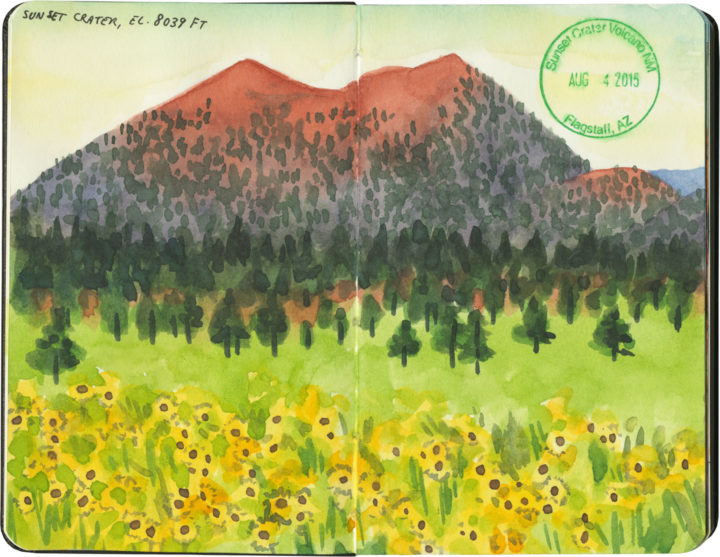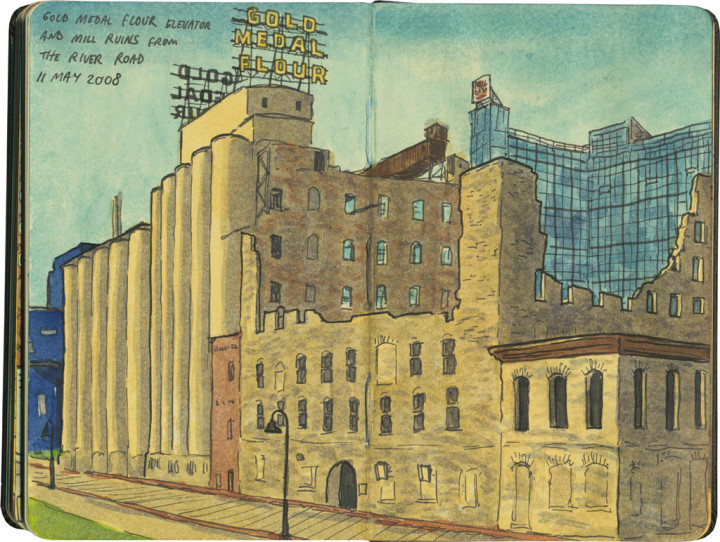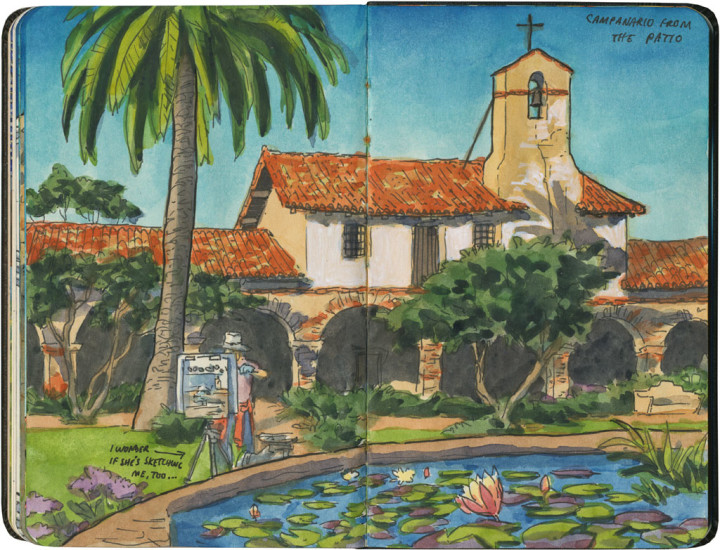On our way up to the Grand Canyon for our second day at the park, the Tailor and I decided to swing through a trio of national monuments located a short detour away, just outside of Flagstaff, AZ. Since what is arguably the most famous national park lies just down the road, these sites tend to get overshadowed a bit. Yet all are worth a stop, and all are closely linked to one another.
First up is Sunset Crater National Monument, a volcanic cinder cone and a landscape painter’s dream. The name, coined by John Wesley Powell, comes from the subtle gradation of reds and purples within the volcanic rock. Combined with the surrounding meadows that bloomed with wildflowers while we were there, the effect was stunning.
On the other side of Flagstaff lies Walnut Canyon National Monument. At first glance, this place appears to have little in common with Sunset Crater, but in fact the two are intrinsically connected. The people of the Sinagua culture had been living above the canyon rim since about the year 600, but after Sunset Crater erupted in about the year 1100, the population near the canyon grew rapidly as people fled the volcano. After that, the Sinagua began to settle inside the canyon itself, constructing cleverly-hidden cliff dwellings up and down the canyon’s walls (there are three sketched out in the drawing above—can you spot them?).
I’ve saved the best for last: Wupatki National Monument. This site is located just a few miles north of Sunset Crater, and preserves entire pueblos built by the Sinagua. This sandstone city was built following the eruption of the cinder cone, after the deposit of volcanic ash made the area’s soil much more fertile. The Wupatki pueblo, pictured here, is the largest settlement within the national monument—this one apartment-building-like structure had 100 rooms and housed up to a hundred people (the entire settled region had several thousand Sinagua inhabitants).
I’ve visited a lot of the ancient pueblo ruins of the Southwest, and I’m always drawn to the sophisticated architecture of each one. But so far I haven’t seen anything that provides as clear a picture of what life must have been like then as this place does. Walking through Wupatki really feels like one is trespassing through someone’s house—someone who might just return at any moment.














